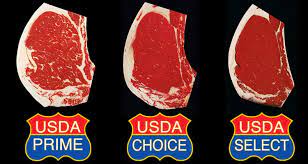Consumers are willing to pay more for what they want.
Domestic beef demand is the strongest it has been in three decades. Beef gained about 8% market share over the last two decades. U.S. beef exports through November 2021 were on a record pace in terms of volume and value.
Kevin Good, CattleFax analyst and vice president of industry relations, said this is all a result of listening to the consumer.
Good was speaking to members of the American Hereford Association (AHA), guests and allied industry partners during an educational forum at the organization’s Annual Membership Meeting and Conference in Kansas City, Mo, Oct. 22, 2021.
“Think about grade, think about consistency. They are the driving points,” Good explained. “Today, we have a much better product than we had in the past and our customers are rewarding us with more dollars.”
For perspective, 72.7% of all beef cattle graded Choice in 2020 and 10.2% graded Prime, according to USDA’s Estimated National Grading Summary. Just 10 years earlier, 60.1% were Choice and 3.4% were Prime. Through October this year, 72.6% were Choice and 10.1% were Prime.
Whether regarded as the proverbial chicken or egg, Good pointed out carcass quality increased as the industry applied premiums and discounts in order to get what consumers wanted.
“About 70% of the [fed] cattle we sell in the U.S. today are sold on a grid or formula, so cattle are rewarded once the hide is taken off,” Good explained. “Plainer, poorer cattle that used to be par are now at a discount. The premium has gone away for middle-of-the-road cattle. You still have very distinct premiums for the top end.”
Certified Hereford Beef is an example of a quality-based program offering a value-based grid to producers and a dependably satisfying eating experience to consumers.
Good expects the quality grade trend to continue.
“There will be a time when we produce 20-30% prime in the national herd, and it’s not that far away,” Good predicted. “As we think about what our customer is demanding, let’s remember that last year, with COVID, we couldn’t sell Prime through restaurants, it went through retail. Every major retail chain in the U.S. now has a premium product offering. Consumers want it, so we’re going to have to provide it.”
Good also shared price expectations for 2022, as cow numbers and fed cattle supplies decline and more leverage returns to producers. CattleFax projects calves to average $205/cwt., compared to $170 this year; yearlings to average $168, compared to $140 this year; fed steers to average $140, compared to $121 this year.















